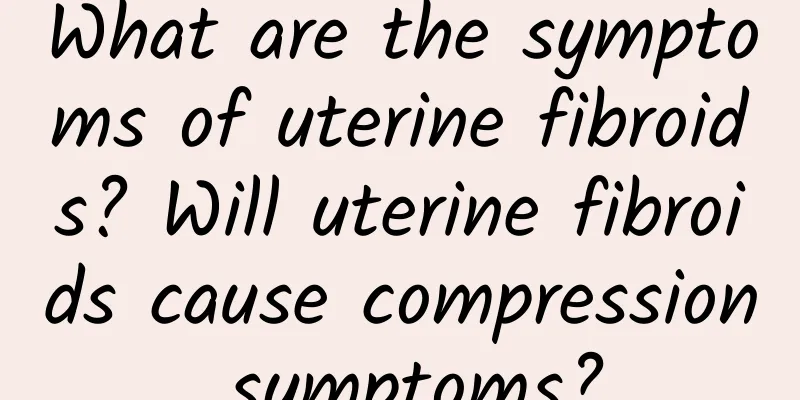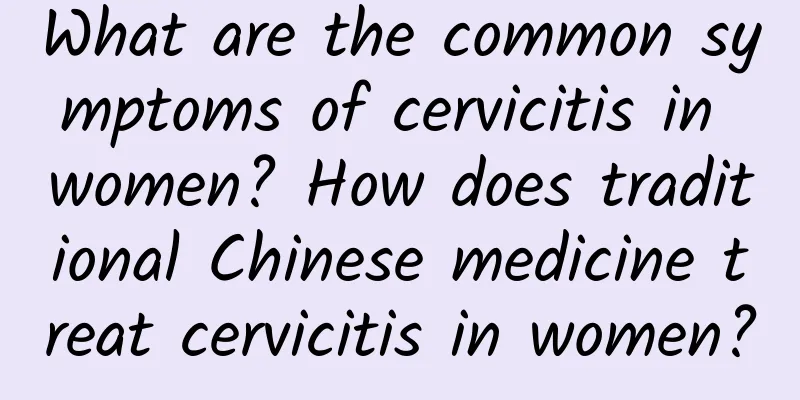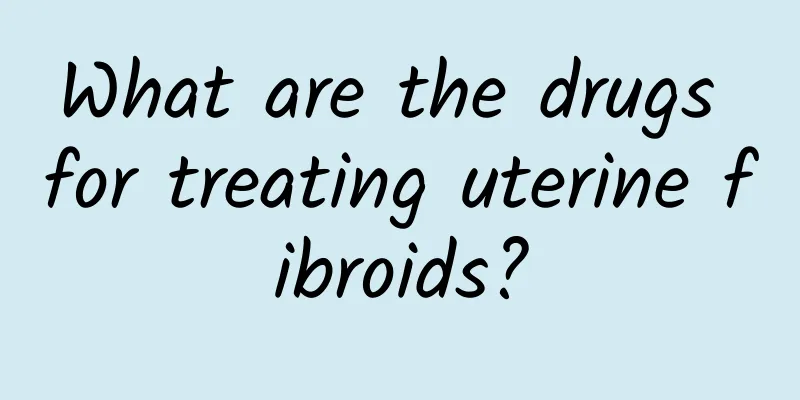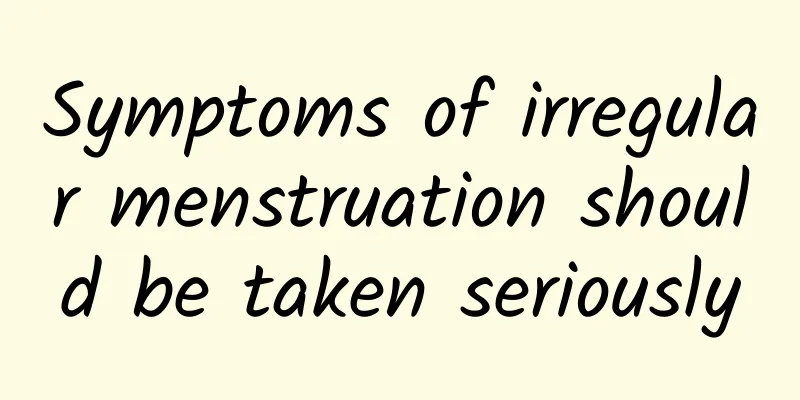What are the symptoms of uterine fibroids? Will uterine fibroids cause compression symptoms?

|
There are many kinds of gynecological diseases. Uterine fibroids are a common gynecological disease. People with this disease should not worry too much. As long as they actively treat it, they can control the disease well. To treat the disease, you must first understand the symptoms of the disease and do not miss the best treatment time. What are the symptoms of uterine fibroids? Increased vaginal discharge: Intramural fibroids increase the area of the uterine cavity, increase endometrial secretions, and are accompanied by pelvic congestion, leading to increased vaginal discharge; once submucosal fibroids are infected, there may be a large amount of purulent vaginal discharge. If the fibroids ulcerate, necrotize, or bleed, there may be bloody or purulent vaginal discharge with a foul odor. Lower abdominal mass: When the fibroids are small, the mass cannot be felt in the abdomen. When the fibroids gradually increase in size, the uterus can be touched from the abdomen to feel a hard mass when the pregnancy is more than 3 months, which is more obvious when lying flat in the morning. What are the clinical manifestations of uterine fibroids? Huge submucosal fibroids can break away from the cervix and even the vagina, and the patient can break away from the mass due to the vulva. Compression symptoms: If the anterior uterine wall fibroids compress the bladder, it can cause frequent urination and urgency; cervical fibroids can cause dysuria and urinary retention; posterior uterine wall fibroids can cause lower abdominal swelling, discomfort, constipation and other symptoms. Broad ligament fibroids or giant cervical fibroids develop laterally, embed into the pelvic cavity, and compress the ureter, which can cause ureteral dilatation, hydronephrosis, and even one kidney without function. Abdominal pain, backache, and lower abdominal distension: Patients usually have no abdominal pain. When the pedicle of the subserosal fibroid is twisted, there will be acute abdominal pain. When the fibroid turns red, the abdominal pain will be severe and accompanied by fever. Don't worry too much about the disease. As long as you face the disease positively, you can cure the disease well. But as female friends, we must develop good living habits, avoid unclean sex life, and pay attention to menstrual hygiene to effectively prevent diseases. |
<<: What are the symptoms of uterine fibroids? Clinical manifestations of uterine fibroids
>>: What to do with mild uterine fibroids? Symptoms of mild uterine fibroids
Recommend
What to eat for pelvic effusion?
What should I eat for pelvic effusion? 1. Pelvic ...
How to regulate the diet of patients with dysmenorrhea
For patients with dysmenorrhea, how to regulate d...
Detailed explanation of the symptoms of severe cervicitis
The early symptoms of cervicitis are often ignore...
What should not be eaten for uterine fibroids? Top 10 foods that are forbidden for uterine fibroids
What can't you eat if you have uterine fibroi...
If you don’t control your eating habits during the Chinese New Year, your weight will be taken into consideration and you will have the “four highs”! Nutritionist: The principle of "four less and one more" should be adhered to
During the Chinese New Year, it is common to see ...
A Suzhou-style mooncake contains a lot of oil, which takes 20,000 steps to burn.
During the Mid-Autumn Festival, when families cel...
What causes cervical warts
What causes cervical warts? Although medical stan...
What should be paid attention to in the prevention of ovarian cysts
Daily life conditioning is very important for pre...
Risks of ovarian cyst surgery
Risks of ovarian cyst surgery: If ovarian cysts a...
Eating less and exercising more is still difficult to lose weight. Waist, hips and thighs are the top three
I have tried hard to eat less and exercise more, ...
The main reasons why women suffer from cervical erosion
Cervical erosion is a serious gynecological disea...
What should I do if cervical polyps bleed as much as menstruation?
What should I do if cervical polyps bleed as much...
How to prevent recurrence of vaginitis
How to prevent recurrence of vaginitis? The most ...
Experts briefly analyze the common classification of cervical erosion
According to the time of occurrence of cervical e...
Introduce some knowledge about pregnancy symptoms
Many girls, after getting married, are not aware ...









